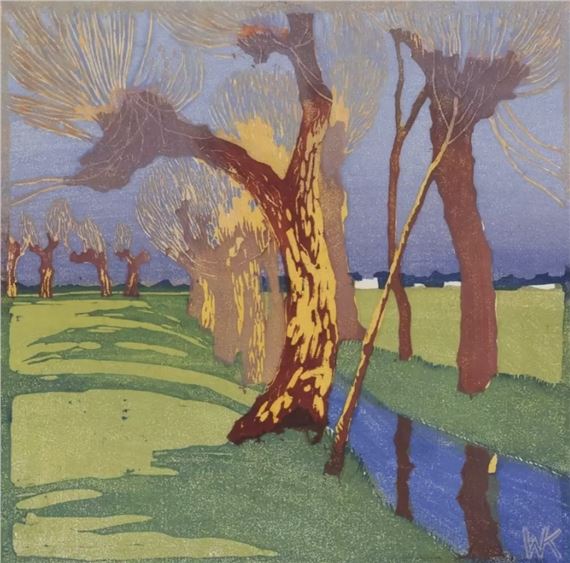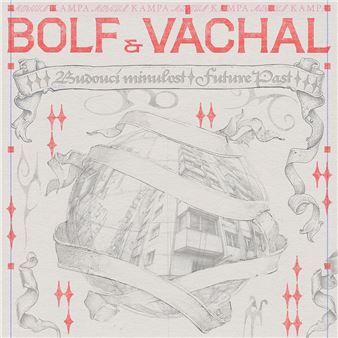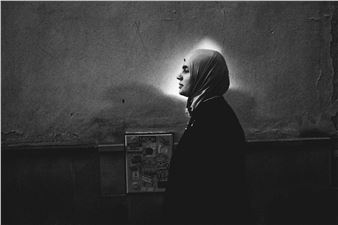Wood/Cut
The exhibition‚Äôs objective is to present the little-known art production that links the territories and aesthetic aims of sculpture, graphic art and painting. The colour woodcut as a printmaking technique flourished around 1900. The Prague art scene also reflected this artistic medium from an international perspective. Based on the output of the Czech-German artists Walther Klemm and Carl Thiemann, who created in 1905‚Ā†‚Äď‚Ā†1908 in Prague extensive and ambitious graphic work in the form of colour woodcuts, the exhibition will explore the international context of the Central European art production, especially the innovative transfer of aesthetic elements that surpass the boundaries of materiality of artistic expression.
The exhibition will examine new aesthetic and socio-historical aspects of traditionally perceived graphic art, as well as the plurality of inspiration and possibilities of art between art centres and individual artists. The point of departure will be the widely disseminated Art Nouveau style and its inspiration in Japanese woodblock prints and also in the work of Paul Gauguin ‚Ā†‚Äď‚Ā† a style that took deep root in art academies in Prague, and particularly in Vienna and Munich. The years 1900-1918 will be devoted to the transformation of the Art Nouveau aesthetic enriched in the woodcut medium by a modern artistic idiom, such as was the work of Edvard Munch that was closely cited in the output of Walter Klemm and loosely reflected in the works of the Czech graphic artist FrantiŇ°ek Kobliha. Standing on a boundary between sculpture, graphic art and painting, the woodcut was developed in an original manner in Bohemia by FrantiŇ°ek B√≠lek and Josef V√°chal ‚Ā†‚Äď‚Ā† artists who, moreover, were inspired by medieval and folk art woodcuts (V√°chal‚Äôs engravings of broadside prints). For B√≠lek, sculpture turned into graphic art and graphic art in the form of wood matrices became sculpture, just like a colour woodblock print influenced by the Japanese approach to colour could become a painting. Artists who worked from painting to woodcut included Edvard Munch and Paul Gauguin, as well as Emil Orlik, Minka Podhajsk√°, or Walter Klemm and Josef V√°chal.

Recommended for you
The exhibition‚Äôs objective is to present the little-known art production that links the territories and aesthetic aims of sculpture, graphic art and painting. The colour woodcut as a printmaking technique flourished around 1900. The Prague art scene also reflected this artistic medium from an international perspective. Based on the output of the Czech-German artists Walther Klemm and Carl Thiemann, who created in 1905‚Ā†‚Äď‚Ā†1908 in Prague extensive and ambitious graphic work in the form of colour woodcuts, the exhibition will explore the international context of the Central European art production, especially the innovative transfer of aesthetic elements that surpass the boundaries of materiality of artistic expression.
The exhibition will examine new aesthetic and socio-historical aspects of traditionally perceived graphic art, as well as the plurality of inspiration and possibilities of art between art centres and individual artists. The point of departure will be the widely disseminated Art Nouveau style and its inspiration in Japanese woodblock prints and also in the work of Paul Gauguin ‚Ā†‚Äď‚Ā† a style that took deep root in art academies in Prague, and particularly in Vienna and Munich. The years 1900-1918 will be devoted to the transformation of the Art Nouveau aesthetic enriched in the woodcut medium by a modern artistic idiom, such as was the work of Edvard Munch that was closely cited in the output of Walter Klemm and loosely reflected in the works of the Czech graphic artist FrantiŇ°ek Kobliha. Standing on a boundary between sculpture, graphic art and painting, the woodcut was developed in an original manner in Bohemia by FrantiŇ°ek B√≠lek and Josef V√°chal ‚Ā†‚Äď‚Ā† artists who, moreover, were inspired by medieval and folk art woodcuts (V√°chal‚Äôs engravings of broadside prints). For B√≠lek, sculpture turned into graphic art and graphic art in the form of wood matrices became sculpture, just like a colour woodblock print influenced by the Japanese approach to colour could become a painting. Artists who worked from painting to woodcut included Edvard Munch and Paul Gauguin, as well as Emil Orlik, Minka Podhajsk√°, or Walter Klemm and Josef V√°chal.

 ARTISTS
ARTISTS















